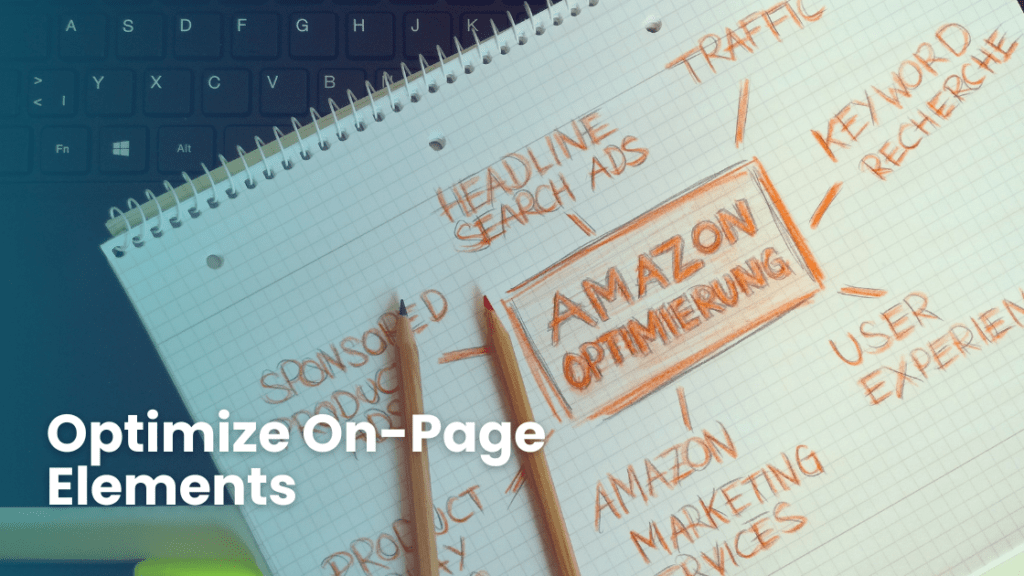In this comprehensive article, we will explore each essential strategy and technique in detail, complete with practical examples to help your B2B website rank higher on search engines, attract targeted traffic, and generate valuable leads. So, let’s dive right in!
1. Understanding the B2B SEO Landscape
When it comes to B2B SEO, understanding the distinctive landscape it operates within is crucial. Unlike B2C marketing, which targets individual consumers, B2B marketing focuses on businesses as potential customers. It is important to recognize that businesses have their own unique needs, pain points, and buying behavior.
In his book “Start With Why,” Simon Sinek emphasizes the importance of understanding the “why” behind your business. This concept can be applied to B2B SEO as well. By understanding why businesses in your industry would be interested in your SaaS solutions for project management, you can effectively tailor your marketing approach.
For example, instead of solely highlighting the individual user experience of your product, you can emphasize how it streamlines team collaboration and boosts productivity. Businesses are more likely to be interested in the tangible benefits and value that your product brings to their operations. By aligning your marketing message with their specific needs and pain points, you can effectively attract and engage B2B customers.
By focusing on the “why” behind your B2B SEO strategy, you can create content and messaging that resonates with businesses in your industry. This approach allows you to differentiate your product and highlight the unique value it offers, ultimately increasing your chances of success in the B2B market.

2. In-Depth Keyword Research
Effective keyword research is a foundational element of a successful SEO strategy. It involves identifying the most relevant and high-impact keywords that resonate with your B2B audience. By incorporating these keywords into your website content, you can optimize your visibility on search engines and attract the right audience.
According to Neil Patel, a renowned SEO expert, keyword research is a critical step in driving organic traffic to your website. He suggests utilizing various tools like Google Keyword Planner, SEMrush, UberSuggest, or Ahrefs to uncover high-volume, low-competition keywords. These tools provide valuable insights into search volume, keyword difficulty, and related keyword suggestions, enabling you to make informed decisions about which keywords to target.
For example, if you are a B2B marketing agency, your primary keywords could include “B2B lead generation strategies,” “B2B content marketing,” and “B2B social media advertising.” These keywords are specific to your industry and reflect the topics and services your target audience is likely searching for. By incorporating these keywords strategically into your website content, you increase the likelihood of ranking higher in search engine results and attracting qualified traffic to your B2B website.
Neil Patel emphasizes the importance of finding a balance between search volume and competition when selecting keywords. It’s not just about targeting high-volume keywords, but also identifying keywords with lower competition that allow you to rank more easily. By targeting a mix of high-impact keywords and long-tail keywords, which are longer and more specific keyword phrases, you can attract a more targeted audience and increase your chances of conversion.

3. Compelling and Unique Content
Content is undeniably the king in the realm of SEO. It is crucial to create valuable and engaging content that directly addresses the unique challenges encountered by businesses in your niche. By showcasing your expertise through well-researched blog posts, informative whitepapers, insightful case studies, and comprehensive industry reports, you can establish yourself as a trusted authority in your field.
According to Gary Vaynerchuk, a renowned entrepreneur and digital marketing expert, content creation should focus on providing value to your audience. He emphasizes the importance of understanding your target market and tailoring your content to meet their needs. By addressing their pain points and offering practical solutions, you can build trust and establish yourself as a go-to resource in your industry.
To maximize the impact of your content, it is important to diversify your formats. Besides blog posts, consider creating informative videos, engaging infographics, or interactive webinars. By offering various content types, you can cater to different learning preferences and engage a wider audience.
Suppose your B2B website focuses on cloud-based accounting software. In that case, you could produce an in-depth whitepaper on “The Future of Cloud Accounting: Trends and Opportunities for Businesses,” demonstrating your thought leadership in the industry.

4. Optimize On-Page Elements
To ensure that search engines properly recognize the relevance of your content, it is crucial to implement effective on-page optimization techniques.
One key aspect of on-page optimization is incorporating your primary keyword strategically throughout your content. This includes the page title, meta description, URL, and headers. By including your target keyword in these key areas, you provide clear signals to search engines about the topic and relevance of your page.
For example, let’s consider a B2B consulting firm targeting the keyword “B2B market research.” In this case, a well-optimized page title could be “B2B Market Research: Uncovering Opportunities for Your Business.” This title not only includes the target keyword but also highlights the value proposition of the content.
Another crucial aspect of on-page optimization is organizing your content using headings (H1, H2, H3 tags). These headings not only improve the readability and structure of your content for users but also provide search engines with a clear hierarchy of information. By utilizing appropriate headings, you can highlight important sections and improve the overall user experience.
Moz Pro recommends a comprehensive approach to on-page optimization, including optimizing images, improving page load speed, enhancing mobile-friendliness, and creating unique and valuable content. By following these best practices, you can ensure that your B2B website is optimized for search engines and provides an excellent user experience.
As AI continues to advance rapidly, search engines like Google are incorporating AI into their search algorithms. This shift emphasizes the importance of producing useful and relevant content that holds authority in order to achieve higher rankings.

5. Mobile-First Approach
Adopting a mobile-first approach for your B2B website is no longer a luxury, but a necessity. With the increasing number of users accessing the internet through mobile devices, it is crucial to ensure that your website is fully responsive and optimized for mobile viewing.
Google recognizes the importance of mobile-friendliness and prioritizes mobile-friendly websites in its search rankings. This means that if your website is not mobile-friendly, you may be missing out on valuable visibility and potential traffic.
To determine the mobile-friendliness of your B2B website, you can use Google’s Mobile-Friendly Test tool. This tool analyzes your website’s mobile performance and highlights any issues that may hinder the user experience. If the test reveals any problems, it is essential to work closely with your web developer to address them promptly. This may involve optimizing page load speed, adjusting layouts, or improving overall responsiveness.
By ensuring that your B2B website is fully optimized for mobile devices, you enhance the user experience, increase engagement, and improve your chances of ranking higher in mobile search results. Embracing a mobile-first approach not only aligns with the evolving digital landscape but also demonstrates your commitment to providing a seamless experience for your audience, regardless of the device they use.

6. Leverage High-Quality Backlinks
Acquiring high-quality backlinks from authoritative B2B websites is a powerful strategy to strengthen your SEO efforts. There are three primary ways to earn backlinks.
Firstly, naturally-earned links are the ideal scenario where websites gain backlinks organically through the discovery and sharing of their valuable content by other websites.
Secondly, manual links are acquired through proactive efforts such as reaching out to relevant websites for collaboration or guest blogging opportunities. By linking to your B2B software company within the content, you can strategically gain manual backlinks.
Lastly, self-created links involve manually adding backlinks to forums, blog comments, or online directories. However, it is important to exercise caution with self-created links as some tactics may be considered “black hat SEO” and can harm your search engine reputation. These links are often labeled with “no follow” tags.
For a B2B software company, collaborating with reputable tech blogs or industry publications to publish guest posts is an effective way to showcase your expertise in software development trends and gain valuable backlinks.
By implementing a proactive backlink strategy, you can enhance your website’s authority and visibility, ultimately boosting your SEO efforts and attracting more targeted traffic to your B2B software company.

7. Implement Structured Data Markup
Structured data, also known as schema markup, plays a vital role in helping search engines understand the context and relevance of your content. By implementing schema markup, you can enhance the appearance of your website in search engine results pages (SERPs) and improve click-through rates.
For your B2B product pages, it is recommended to implement schema markup that includes essential details such as the product name, price, and availability. This additional information displayed directly in search results can provide users with valuable insights and encourage them to click on your listing.
By leveraging schema markup effectively, you can optimize your B2B website’s visibility in SERPs, increase the likelihood of attracting qualified traffic, and ultimately drive more conversions. It is a simple yet powerful technique to enhance the presentation and visibility of your B2B product pages in search results.

8. Enhance Website Speed / Performance
Website speed is a critical factor that directly impacts both user experience and SEO rankings. To optimize the speed of your B2B website, it is essential to implement various techniques such as minimizing image sizes, leveraging browser caching, and utilizing a content delivery network (CDN).
Faster loading times have a positive impact on SEO rankings, as search engines consider user experience as a crucial ranking factor. Slow-loading websites can lead to a higher bounce rate, which negatively affects user engagement and satisfaction.
According to Google, if your page takes longer than three seconds to load, the probability of bounce nearly triples. To address this, compress images without compromising quality and consider implementing lazy loading for images and videos. These measures can significantly decrease initial page load times and improve overall website speed.
By optimizing your B2B website’s speed, you enhance user experience, reduce bounce rates, and increase the likelihood of higher search engine rankings. Prioritizing website speed is an important aspect of SEO and can contribute to the overall success of your B2B website.

9. Foster User Engagement
Engaging users is a key factor in converting them into valuable leads. To foster user engagement on your B2B website, it is essential to encourage comments, shares, and interactions on your content. Actively responding to queries and feedback helps build a strong online community and enhances the overall user experience.
In addition to encouraging comments and shares, incorporating interactive elements can further enhance user engagement. Creating quizzes, polls, or surveys related to your B2B products or services encourages visitors to actively participate and share their opinions. These interactive elements not only provide a fun and interactive experience but also gather valuable insights from your target audience.
By actively engaging with your audience and incorporating interactive elements, you can create a sense of community and encourage users to become more involved with your B2B brand. This increased engagement can lead to higher conversion rates and a stronger connection with your target market.

10. Analyze and Adapt
In the ever-changing world of SEO, regular analysis is crucial for staying ahead. Tools like Google Analytics and Google Search Console provide valuable insights into your website’s performance, user behavior, and keyword rankings.
By utilizing these tools, you can track important metrics and gather data to inform your SEO strategy. Analyzing website traffic sources allows you to identify which channels are driving the most qualified leads. If you find that your organic search traffic is underperforming, it may be necessary to refine your keyword strategy and optimize your content accordingly.
Adjusting your SEO strategy based on these insights is key to maintaining a competitive edge. By staying proactive and adapting to changes in search algorithms and user behavior, you can continuously improve your website’s visibility and attract more targeted traffic.
Regularly monitoring and analyzing your SEO performance helps you identify areas for improvement and make data-driven decisions. By optimizing your keyword strategy, content, and overall website experience, you can enhance your organic search rankings and increase your chances of generating valuable leads.
Conclusion
Mastering SEO best practices for B2B websites in 2023 requires a combination of understanding your audience, producing top-notch content, and staying updated with the latest trends. By implementing the strategies outlined in this guide, you can create a powerful online presence, outrank competitors, and drive significant traffic and leads to your B2B website. Remember, SEO success doesn’t happen overnight, but with consistent effort and dedication, you can achieve remarkable results. Best of luck on your SEO journey!


